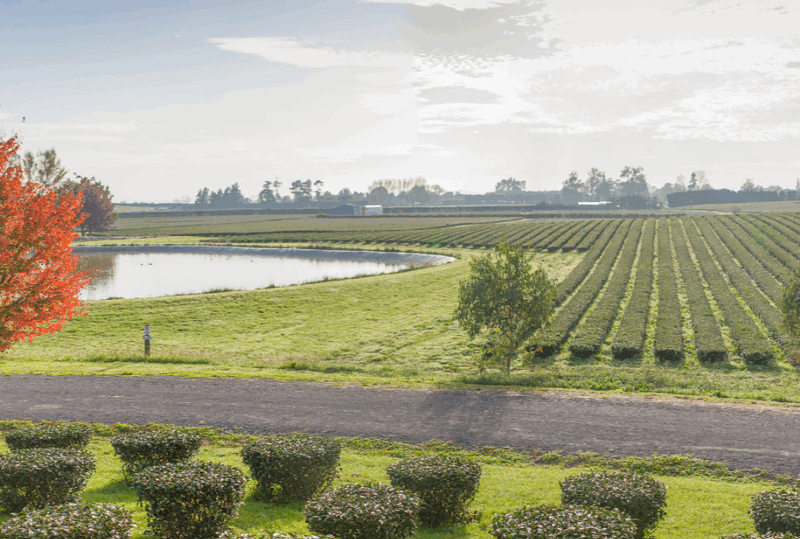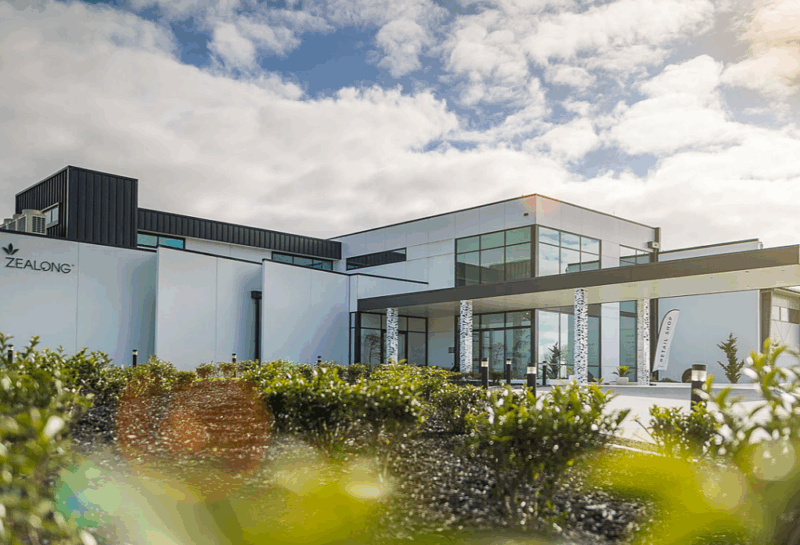Artisan skill and technology a successful brew at Zealong Tea Estates

With 48 hectares of certified organic Camellia sinensis growing in the heart of the Waikato, Zealong Tea Estate is New Zealand’s only commercial tea estate.
You can tour the estate and sculpture walk, sample a high tea at their Tea Room, have a luxurious French-inspired meal at their Camellia Restaurant prepared by a chef plucked from the Michelin-starred kitchens of Paris, or take part in a traditional tasting of their internationally awarded teas.
As a visitor destination, it’s a major asset to the region and the teas have been served to the likes of China’s President Xi Jinping and Her Majesty Queen Camilla during official events, and the estate has been filmed for the BBC Earth documentary One Cup, a Thousand Stories, which highlighted the estate’s quality-based approach to producing certified organic tea.
Behind the scenes, the process of manufacturing its teas blends artisan skill and technology. The EMA’s Nicholas Russell sat down with Zealong General Manager Sen Kong to find out where they have used technology to improve efficiency but also how the human touch remains irreplaceable.
Zealong has invested heavily in both people and technology. Why is the human touch still so crucial in your industry?
Sen Kong: Technology plays a huge role in streamlining parts of our operation, such as processing, drying and quality control, but when it comes to the actual picking of the tea, the human hand is still superior.
Machines aren’t yet sophisticated enough to distinguish the top three leaves from the rest of the plant, and that matters. Those top three leaves are the most tender and flavour rich. A machine might take too much, or damage the plant, which affects secondary growth.
A trained picker knows exactly how to pluck, preserving both the leaf quality and the health of the bush.
In addition, tea making is a specialised skill passed down through generations. Our tea experts have often worked in China, Taiwan and Sri Lanka – regions with centuries of tea heritage.
They travel the world during peak harvest seasons and bring a wealth of traditional knowledge. In New Zealand, our harvesting season is November, January, and March and during this time their expertise is invaluable.
It’s not just about knowing the science, it’s about sensing the leaf’s potential and guiding it through each phase with care.
What are the challenges of manufacturing tea in the Waikato?
Sen Kong: We have a temperate climate, fertile soil, and abundant rainfall in the Waikato and this creates ideal conditions for growing high-quality tea.
The region’s unique combination of hot days and cool nights provides the moisture and temperature variations that tea plants thrive in.
However, unlike many other tea producers, we built a state-of-the-art glass house where tea is laid out on mats for withering in a temperature and humidity-controlled environment, complete with fans and ventilation.
Withering involves reducing the moisture content of tea leaves, making them pliable for further processing.
New Zealand weather is too unpredictable to do this outside as is done in traditional tea-making areas. It also helps us ensure strict food safety standards during this crucial step. Zealong is the only tea in the world that satisfies the ISO 22000 food safety standards from farm all the way to finished product.
Every stage, from cultivation to processing, meets ISO22000/HACCP and Biogro Organic certified standards.
Is producing tea difficult?
Sen Kong: Oolong tea is what we’re best known for, and for good reason. It’s a tea that demands both technical know-how and a deeply intuitive understanding of the leaves.
Oolong requires a carefully timed oxidation process, where enzymes in the leaf interact with oxygen to develop the tea’s complex flavour. Too much oxidation and the tea will lose its brightness; too little and it remains subtle and delicate .
Oxidation, or browning of the leaves, begins after withering when the leaves are bruised, exposing enzymes to oxygen. The oxidation process is stopped by roasting the leaves. Judging the correct time for roasting the tea leaves requires extensive experience in tea processing.
After oxidation is halted, the leaves go through rolling and drying. Rolling is where the leaf is twisted into small, tight bundles that unfurl beautifully in the cup. For oolong, this rolling is done up to 80 times over 12 hours to create that iconic flavour bomb.
Drying then follows, which must reduce moisture to just the right level, usually around 3–5%. Here, our equipment gives us exact readings, but our tea experts also use their senses and experience to monitor the process and achieve the desired flavour.
How do you balance tradition and innovation in your operations?
Sen Kong: That’s at the heart of what we do. We honour centuries-old techniques because they work. But we also embrace technology where it makes sense. For instance, our custom drying rooms allow us to replicate ideal conditions year-round, despite New Zealand’s unpredictable climate.
But even with this tech, our tea experts are the final judges. Their hands and eyes are irreplaceable.
How has Zealong worked with the EMA to drive success?
Sen Kong: We host the EMA’s Hamilton Member Briefing three times a year at our conference centre, and it usually draws the largest crowd. It’s a great opportunity to get together with businesses from around the region, get an update on the latest economic, policy and legal changes in New Zealand and to network with our peers.
Development of our people is extremely important at Zealong and we have built a team of more than 25 cultures to bring diversity, different perspectives and fresh ideas into our business.
Through the EMA, we have put our staff though health and safety representative training, and we use their webinars and in-person events to stay up to date on the latest employment relations and legislative changes such as 90-day trials, and trade developments such as the UAE free trade deal.
Where do you see Zealong heading next?
Sen Kong: We’re focused on sharing New Zealand-grown, organic tea with more of the world.
Export is growing steadily, especially in markets like Japan, Europe and the United States that appreciate high-quality teas.
But our ethos won’t change. Whether it’s served in a Michelin-starred restaurant or enjoyed at home, every cup of Zealong tea is a testament to the people behind it.



